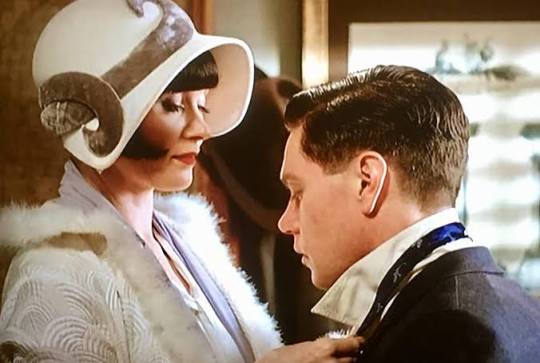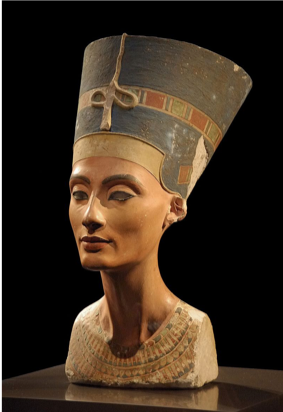#phryne
Text

You may now proceed to worship me.
#caturday#cats#cat#cats of tumblr#kitties#kitty#kitties of tumblr#pets#pets of tumblr#animals#animals of tumblr#cute cats#cute#cute pets#cute animals#cute kitty#pretty#pretty kitty#pretty girl#maine coons#baby#floof#fluffy cat#cats of hufflepuff#hufflepuff#phryne#bow before your god#her ladyship#floofy baby#lady
165 notes
·
View notes
Text
I wish more people watched Miss Fisher's Murder Mysteries because I want to SCREAM about these two.




#miss Fisher's murder mysteries#mfmm#phryne fisher#jack robinson#Phryne#Jack#phryne x jack#jack x phryne#tv recommendation#Their chemistry is off the charts#Their dynamic is so chaotic and fun to watch#This is a slow burn romance but it was really worth it 🤧
374 notes
·
View notes
Text
Saturday, I’ll walk for my Master’s degree in Secondary English Education. I actually finished in December, but decided I wanted to walk at the graduation. I had to have a little bit of Phryne with me, and this is what I came up with. I wonder if others have decorated grad caps with MFMM before?
(also, props to my 8-year-old daughter, who totally noticed that I used the MFMM font.)

#I want to be Phryne Fisher when I grow up#phryne fisher#miss fisher's murder mysteries#mfmm#phryne x jack#miss fisher and the crypt of tears#jack robinson#detective inspector jack robinson#essie davis#phrack#nathan page#there’s a whole world out there#There’s a whole world out there Jack#WGU class of 2023#WGU#miss phryne fisher#phryne#jack and phryne#phryne and jack#phryne fisher muder mysteries#jack x phryne
84 notes
·
View notes
Text

Phryne before the Areopagus by Jean-Léon Gérôme
#jean léon gérôme#art#phryne#areopagus#hypereides#robe#beauty#trial#impiety#acquitted#ancient greek#ancient greece#greek#greece#antiquity#classical#history#europe#european
90 notes
·
View notes
Text

Merry Christmas from Miss Phryne . . .
#danielle monique#photography#iphone#australia#daniellemonique#western australia#aquariuswomen#nature#aquarius♒#aquariuswoman#missphryne#phryne#bordercolliesofwesternaustralia#bordercolliesofaustralia#bordercolliesoftheworld#bordercolliesoftumblr#tricolourbordercollie#merry christmas
21 notes
·
View notes
Text
Don't know if Tumblr or UQuiz will let this exist, but here it is and you can take my quiz if you want. I got Neaera.
94 notes
·
View notes
Text



closet snaps: merry lamb lamb for ginza magzine june ’22 issue
58 notes
·
View notes
Video
youtube
Jack & Phryne || Leaving my love behind
7 notes
·
View notes
Text
DID Series Review

Facts -
Series name: Fractale
Run time: 2011-2011 (11 episodes)
Fiction or Nonfiction: Fiction
Was there a diagnosis of DID? Not explicitly, no
Was the person with DID presented as evil for having DID? No
Major Trigger warning list:
- Heavy Religious Themes (talk of purity and sin and all that)
-Incestuous Sexual Abuse (nonexplicit but heavily implied)
- mild Anime Bullshit (Awkward sexual themes and fanservice of minor characters that all anime seems to have some of)
- Gun violence, blood
- heavy themes of government control and gaslighting
- themes of people going ‘crazy’ and suicidal
- attempted sexual assault
- Clones being created and evaporated as a government experiment (is this a trigger? It might be)
- the implication of purposefully created DID via traumatic experiences
Subjective Review(this is how I felt about it) –
Personal triggering scale from 1 to 10 (1 being not triggering at all, 10 being a badly overwhelming experience that might cause personal harm): it goes from 1-8 for me because the implications are close to home and it did send me down a weird spiral every time I watched the last episode. There’s also some fairly violent scenes
Personal relatability scale from 1 to 10 (1 being unrelatable, 10 being OMG THAT’S ME!): 9
Personal avoidance scale from 1 to 10(1 being eager to get on with it, 10 being impossible to finish): 2
My interpretation of the media(Includes spoilers):
Fractale takes place in a futuristic society that relies entirely on the Fractale System, which is kind-of like the internet + VR capabilities. Most people use avatars, or named in this series Doppels to travel throughout the world while staying stationary themselves elsewhere(?). The logic of it all is both explained throughout the series and also very vague and hard to understand
The story follows Klaine as the male lead who doesn’t use the Fractale system, instead living in a rural little town on his own, away from his parents. He doesn’t seem to care about anyone or anything but collecting tech from the old world(which would be our modern society). His whole life is turned upside-down when our interesting female lead Phryne flies into his life, evidently on the run from rebels trying to capture her. Phryne hides with Klaine and leaves him the next morning with a little pendant; the key to the Fractale system.
Within the pendant is a little girl Doppel named Nessa, who seems to have a both physical and digital form and is full of energy and attachment feelings
Everything about this anime is unoriginal, based heavily on Castle in the Sky I’m guessing, as well as maybe Ready Player One(or maybe Sword Art Online? I can’t say because I haven’t seen that one though). But somehow, by taking these honestly better Ips and mashing them together, they’ve made this incredibly unoriginal and bland piece of art. I couldn’t find anything interesting about Klaine to even root for him really.
A lot of the series is focused around The System Bad But Also The Rebels Bad Because They Are Extreme. So the message is very blurry and poorly portrayed, especially when we have the ending that… Both Are Good Enough Anyway So We Didn’t Change Anything Actually Despite Many People Dying For Both Causes. It’s…. really ambiguous as to what the fuck all this was for? The anime was made with a lot of spite and hatred for the anime industry and you can just tell there’s not a lot of love put into it, unlike other series I’ve watched for these reviews.
Except.. For the portrayal of DID. Which is what we’re here for.
Maybe it’s because of how vague the whole anime is, but it lends enough room for the portrayal of DID to be fairly accurate, which can vary wildly from individual to individual as it is.
To explain shortly, Nessa, the key to the Fractale system, is a dissociated part of Phryne. In fact, that’s explicitly what she is, as revealed in the final episode.
1,000 years ago, when the Fractale System was created, they chose a girl to be the key to rebooting the whole system if it was ever needed, essentially making her God. God was a 16-year-old girl with DID, as a result of her father molesting her. It was within this split that they based the whole Fractale system’s stability on.
Now Phyrne had been cloned thousands of times to replicate the original God, but to no avail. One of the clones had been raised by one of the temple’s men as her father. He did some beep boop research into the first Phryne and found out about the DID, so he.. Created DID within her by molesting her too. Thus she split Nessa, who took on a physical form in a Doppel.
Throughout the series, we see the two parts interact a little more over time, from Phryne being negligent and cold to this attachment, pure part of herself, them hating eachother and slowly coming to understand and love eachother in a very DID way that’s honestly quite beautiful.
All of this is vastly interesting and I’m so furious they didn’t focus more of the story on Phryne and Nessa!!!! So much was centered around the boring main character guy’s personal conflicts of am I A Rebel Or Not which ULTIMATELY DIDN’T EVEN MATTERRRR AAAAA
Overall, the execution of the anime was really poorly done and honestly boring, but I actually loved the concept of Phryne and Nessa and I really wish there was more of them and their relationship. I’ll go into the DID a little more in the rest of the review.
What they got Right in my opinion:
- The cause of DID being childhood trauma, in this case incestuous sexual abuse
- Nessa, although a ‘happy’ part, encapsulates Phryne’s needs for love and attachment, and since she’s dissociated off the whole (and therefore condensed, as parts tend to be), her needs and intense and her reactions are easily triggered
- Phryne being in a lot of denial and inability to confront the fact that Nessa is part of her
- Phryne explicitly dissociates multiple times(eyes go blurry and blank, she goes limp, she seemingly looses time and doesn’t have the full awareness of what may be happening)
- Phryne is notably strong-willed and confident but fawns ‘for the greater good’
- Nessa and Phrynes relationship can only be described as someone coming to love their younger self in such a… Parts way, you know? Like the accepting that you’re eachother and you also love yourself and eachother and ugh, it’s just beautiful
- Nessa and Phryne integrate/fuse at the end, and it’s shown later that they’re now one complete person with traits from both of them, just no longer separate
- Oh, the insecurity and feeling worthless and unlovable from trauma is palpable
- While I thought the incestuous father was portrayed to be pretty over-the-top, I really appreciated how fucked up and not okay and creepy they portrayed it, rather than going more of one of those anime grey area ways you see sometimes. I feel like he was ridiculous, but you felt the weight of what he was doing reguardless
- The portrayal of Nessa being a Doppel really fits into the magic/technology system of the world, where people already tend to have a separation between soul and flesh. It felt like the DID naturally fit in
What they got Wrong in my opinion:
- Klaine is boring as fuck why do we focus on his inner struggles when theres literally so much more to be focused on around him
- I couldn’t think of any glaring issues with the DID representation otherwise. Since things are left fairly vague, there wasn’t anything in particularly ‘wrong’ that they latched onto as fact
Would I recommend this to someone with DID to watch?: Uhhhhhhhhh maybe. I think Phryne and Nessa are somewhat worthwhile, but it can be triggering and otherwise really bland to watch. I’ll just give you a similar vague message as the anime does: sure, whatever
#DID in media#dissociative identity disorder#did in anime#fractale anime#phryne#nessa#dissociative identity disorder anime#actuallydid#bunnidid reviews
13 notes
·
View notes
Text

Synchronised catting.
#caturday#cats#cat#cats of tumblr#kitties#kitty#kitties of tumblr#pets#pets of tumblr#animals#animals of tumblr#sisters#cute cats#cute#cute pets#cute animals#cute kitty#cats of hufflepuff#hufflepuff#phryne#cats of slytherin#slytherin#cimorene#maine coons#floofs#fluffy cats#babies#synchronised catting#cat life#meow
22 notes
·
View notes
Text
You know when Detective Inspector Jack Robinson ALWAYS has his hair perfectly slicked back? But when things get serious... his hair becomes attractively messy for some reason. You know what I mean?





Bonus: Jack's bed hair


#miss fisher's murder mysteries#mfmm#Jack Robinson#detective inspector jack robinson#Nathan Page#Phryne#Phryne Fisher#essie davis#I have a thing with hair#Somebody understand me you get it right...right😭?#Bless the hair stylists for giving us this gem
211 notes
·
View notes
Text
Mr. Butler’s Phryne

“Mr. Butler refilled his [Dr. John Wilson’s] glass. This friend of Miss Fisher’s was a war hero. He should have the best that the Fisher ménage had to offer. Who knew how many young men lived because of Dr. John Wilson? And nearly at the cost of himself. It was like Miss Fisher to think of a solution to a sniper in time to save a friend’s life. Bold but not really reckless.. Those ambulances had armoured sides.
Mr. Butler decided he should create another cocktail for her on the morrow. He would call it ‘Phryne’. Sour, certainly, with a lime juice base, perhaps, and... Cointreau? Cherry brandy? Noyau? This would require study.”
Like Mr. Butler, I like mixing and creating cocktails. And like Miss Fisher, I like sipping them, whilst lounging luxuriously. And Ava and I both adore the Melbournite sleuth dearly. In fact, on the very day we met --dear me, was it almost ten years ago?-- on a hot June day, she was watching an episode of the series, with the delightful Essie Davis playing the detective! Thus, it seemed only appropriate we began our (second) six months’ anniversary feast (delayed by a fortnight; but she wasn’t here a fortnight ago) last night with a couple of Mr. Butler’s Phryne!
Ingredients (serves 1):
8 ice cubes
2 small, ripe limes
1 tablespoon Manuka Honey Syrup
2 teaspoons Cointreau
60 millilitres/2 fluid ounces (4 tablespoons) London Dry Gin
a dash Angostura bitters
Place ice cubes in a shaker.
Thoroughly squeeze the juice of both limes, and pour over the ice. Add Cointreau, Manuka Honey Syrup and Gin. Close shaker tightly, and shake energetically until well-chilled.
Strain into a coupe glass and add a dash of Angostura bitters.
Repeat, serve your beloved, and toast to happiness with this beautifully sour Mr. Butler’s Phryne! Happy Friday!
#Recipe#Drink#Drink recipe#Mr. Butler’s Phryne#Mr. Butler’s Phryne Cocktail#Phryne#Phryne Cocktail#Gin Cocktail#Gin Cocktail recipe#Gin#London Dry Gin#Lime#Lime Juice#Fresh Lime Juice#Honey Syrup#Manuka Honey Syrup#Cointreau#Orange Liqueur#Angostura Bitters#Ice#Ice Cubes#Cocktail#Cocktail recipe#Drink and Literature#Phryne Fisher Cookbook#Phryne Fisher#Mr. Butler#Murder and Mendelssohn#Celebratory Drink#Date Night
4 notes
·
View notes
Text

I finally organized my Phryne Fisher books by “tv tie-in” and “art” covers. The only book I’m still missing in either format is Blood and Circuses. I’m getting closer to having a full set of both editions. I just wish my art cover ones were all the same size.
#phryne fisher#miss fisher's murder mysteries#mfmm#phryne x jack#jack robinson#miss fisher and the crypt of tears#essie davis#detective inspector jack robinson#nathan page#phrack#phryne#poisoned pen press#kerry greenwood
13 notes
·
View notes
Text
Miss Fisher’s Murder Mysteries is so underrated. The MC is a ridiculously fashionable lady detective in 1920’s Australia. Her oldest and dearest friend is a lesbian doctor who dresses like Katherine Hepburn, she finds a girl stealing shit on a train platform and is like “well guess she’s mine now”, her hired help is two communists, a gun enthusiast butler, and a little Catholic girl afraid of telephones. She speaks like 4 languages for some reason? She’s a domestic abuse survivor. She funds a lady race car driving club. She used her diaphragm to catch a deadly spider. She can fly planes. She’s kinky as hell. She used to be an army nurse. Just character of all time.

2K notes
·
View notes
Text
Introduction
What is beauty? You know it when you see it, but can you describe it? Can people agree on it, or is it purely subjective? Is our concept of beauty based in nature, or society? These are the questions that people have been asking themselves for thousands of years. It’s important to remember that beauty ideals are ever-changing. By looking at the past, we can see that at some point, just about everyone was considered the ideal.
We are going to learn a changeable women ideals of beauty throughout history in the pictures, sculptures created by those self-elected gods we call artists. History provides us a record, and from it one basic, inescapable, and ultimately unconscionable truth stands out: the ideals women are asked to embody, regardless of culture or continent, have been hammered out almost exclusively by men. This fact, more than any sort of evolutionary determinism, has meant that a fairly narrow range of attributes resurfaces across eras, returning every couple of decades.
Beauty, as defined by Webster’s Dictionary, is “the qualities that give pleasure to the senses or exalt the mind.” But what exalts my senses, something that I find beautiful, may very well be considered average or even ugly to others. Hence, the constant debate throughout history about what constitutes beauty.
Egypt
Nefertiti (1370–1330 BC)

This representation of the pharaoh’s wife, Nefertiti, is thought to be the most beautiful by both modern and ancient Egyptian standards.
The kohl around Nefertiti’s eyes and her apparently rouged lips speak to a desire for enhancement and adornment that seems too much a part of being human to have a historical starting point. Trends in altering how we look through fashion and jewelry in all likelihood predates any culture-wide preference for a specific body type. The Egyptian example has proven especially influential in the West, particularly since the 1920s.
Goddess Isis (332–30 BC)

For the ancient Egyptians the image of the goddess Isis suckling her son Horus was a powerful symbol of rebirth that was carried into the Ptolemaic period and later transferred to Rome, where the cult of the goddess was established. This piece of faience sculpture joins the tradition of pharaonic Egypt with the artistic style of the Ptolemaic period. On the goddess’s head is the throne hieroglyph that represents her name. She also wears a vulture head-covering reserved for queens and goddesses. Following ancient conventions for indicating childhood.
Cleopatra VII (69 BC — 30 BC)

Cleopatra VII Philopator, contrary to popular belief, was more Macedonian Greek than Egyptian. Her family tree consisted of siblings who married each other (Yes, incest was the custom in the Ptolemaic Kingdom), descended from the Macedonian general Ptolemy I. When she was presented to Julius Caesar, she made a grand entrance by being rolled up in a carpet. It was said that her beauty impressed Julius Caesar to side with her against her husband(he was her brother, Ptolemy XIII). She allegedly gave birth to Caesar’s son, Cesarean. After Caesar was assassinated and the Roman civil war was over, she used her beauty again to charm Mark Antony to side with her, to the point of him donating Roman territories to her children and moving the Roman capital to Alexandria.
Cleopatra is a famous cultural icon of feminine beauty from far history. She was the Ptolemaic Queen of Egypt. Even today, she is portrayed in many media and literature like 1934 and 1963 films Cleopatra, William Shakespeare’s tragedy Antony and Cleopatra and George Bernard Shaw’s play Caesar and Cleopatra.
She is a famous source of perpetual fascination in the Western culture. Cleopatra was the last known pharaoh of Ptolemaic Egypt. Even in the ancient world, she was regarded as a great beauty. A good deal of literature described and praised her beauty to a great extent. In Life of Antony by Plutarch, she has been remarked as “her beauty, as we are told, was in itself neither altogether incomparable, nor such as to strike those who saw her.”
Mummy Mask (60–70 AD)

Plaster masks seem to have been particularly popular in Middle Egypt. They develop of course from Egyptian traditions, but appearances could be strongly individualized and Roman fashions of hairstyle, dress and jewelry were followed to varying degrees. The woman is represented as if lying flat upon her bier. She wears a long Egyptian-style wig made of plant fibers, a deep-red tunic with black clavi (stripes), and jewelry that includes a lunula (crescent pendant), and snake bracelets. At the lower edge of her tunic are two holes, which were used for attaching the mask to the mummy. Over the top of her head is a gilded wreath encircling a scarab beetle that represents the sun appearing at dawn, a metaphor for rebirth.
Conclusion
This relationship between beauty and youth is a very significant part of the concept of beauty in Ancient Egypt, women were encouraged in their independence and beauty. Ancient society promoted a sex-positive environment where premarital sex was entirely acceptable and women could divorce their husbands without shame.
Egyptian women were small in overall stature. In this era, the ideal woman is described as slender, narrow shoulders, high, symmetrical face. Women — used wigs, hair extensions, and hairpieces, as thick, long hair was highly valued.
Women of high rank wore makeup. The Egyptians are, of course, well-known for their opulent eye makeup, which was applied from the eyebrow to the base of the nose. What many do not know, however, the ingredients of the makeup had antibacterial qualities and helped to deter flies and protect against the hot Egyptian sun. Many tinted their nails with sheep fat and blood or henna. Tattooing, generally from henna, was considered erotic, and was heavily practiced among certain classes in Egypt.
Greece
Until in the century of Pericles, fifth century BC, when Athens won a significant development, becomes the cultural, political and economic center of Greece, there was no clear definition of beauty. Before painting and sculpture to develop great beauty was attributed to other virtues such as truth, loyalty, harmony. However, when artists began to paint or write, began to outline some features that, if a person or an object had, they deserved to be called “beautiful.”
Greek philosophers were the first people who asked what makes a person beautiful. Platon, who saw beauty as a result of symmetry and harmony, created the “golden proportion”, he found that in order to be considered “beautiful”, women’s faces should be two-thirds as wide as they are long, and both sides of the visage should be perfectly symmetrical.
But the Greeks were not just obsessed with symmetry, but also long blond hair that is associated with youth and fertility.
Helen of Troy (1300–1200 BC)

For 3,000 years, the woman known as Helen of Troy has been both the ideal symbol of beauty and a reminder of the terrible power beauty can wield. Helen of Troy and the Trojan War were central to the early history of ancient Greece. She is the object of one of the most dramatic love
stories of all time and one of the main reasons for a ten-year war between the Greeks and Trojans, known as the Trojan War. Hers was the face that launched a thousand ships because of the vast number of warships the Greeks sailed to Troy to retrieve Helen.
The poems known as the Trojan War Cycle were the culmination of many myths about the ancient Greek warriors and heroes who fought and died at Troy. With so many men were willing to put their lives on the line to go to battle for her, it’s clear even without a contemporary portrait that Helen had a very special type of beauty.
Aspasia (500 BC)

Aspasia was an influential immigrant to Classical era Athens who was the partner and lover of the statesman Pericles. The exact details regarding the marital status of the couple are still unknown. Aspasia’s house became the center of intellectual teaching in Athens, attracting and influencing prominent teachers like Socrates.
Aspasia is known to have to become a hetaera in Athens, and she has displayed great physical beauty and intelligence. Aspasia’s role in history proves to be crucial to the clues for understanding the women of ancient Greece. In Athens, she was more than just an object of physical beauty and also she was noted for her ability as a conversationalist and adviser.
Phryne of Thespiae (370–316 BC)

Phryne of Thespiae was a famous courtesan of Athens, best known for the court case she won by baring her breasts. Her actual name was Mnesarete (“commemorating virtue”), but she was called Phryne (“toad”) because of the yellow complexion of her skin.
Ancient writers such as Athenaeus praise her extraordinary beauty, and she was the model for many artists and sculptors in Athens, including chiefly posing as Aphrodite.
She was acquitted and went on living a life of luxury as one of the most beautiful and sought-after women of Athens. She became wealthy enough to live as she pleased and even offered to re-build the walls of Thebes, which Alexander the Great had destroyed, if the people would consent to her inscription reading, “Destroyed by Alexander, Restored by Phryne the Courtesan”, but the Thebans refused her offer. Phryne is a famous figure of beauty from the ancient world who is still admired through statues and paintings.
Aphrodite (200 AD)

The Aphrodite exists only in copies of which there were many, because this Aphrodite represented the embodiment of female beauty for Classical Greeks. For us, she is the original Western model, woman as goddess, to be adored and feared. Her soft, rounded flesh bespeaks the power of her sexuality and advertises her life-giving potential. Aphrodite, the goddess who won the goddesses’ beauty contest that led to the Trojan War should be counted among the all-time world-class beauties.
However, this is a list of mortals, so Aphrodite (Venus) doesn’t count. Luckily, there was a woman so beautiful she was used as the model for a statue of Aphrodite. Her beauty was so great it brought about her acquittal when she was put on trial. This woman was the courtesan Phryne whom the famed sculptor Praxiteles used as his model for the Aphrodite of Knidos statue.
Conclusion
Ancient statues show us artists’ idealized form, which for women featured largish hips, full breasts, and a not-quite-flat stomach. But the Greeks were defining more than just “beauty” — they were nailing down the math of attractiveness.
Ancient Greece worshiped the male form, going so far as to proclaim that women’s bodies were ‘disfigured’ versions of men. In this time period, men faced a much higher standard of beauty and perfection than The Greeks were defining beauty literarily, thanks to 8th-7th Century BC author Hesiod, who “described the first created woman simply as ‘the beautiful-evil thing’. She was evil because she was beautiful, and beautiful because she was evil.”
The Greek idea of beauty was pale skin, golden locks and natural makeup. This is vastly different than that of the early adapters to cosmetics the Egyptians and soon we will find that to an extent this ideal is far less dramatic to that of the Romans.
In fact, I think we can conclude that most of the Greek and Egyptian makeup trends are vastly different. In Greece only rich women were able to use cosmetics due to their price.
When it came to Greek women and their hairstyles different lengths and arrangements meant different things. If one was a female slave she would wear her hair short, if a woman wasn’t a slave she would have long hair.
While many women today would pluck a thick “unibrow,” women in Ancient Greece liked the look, and many used dark pigment to draw one in.
Italy
Both for women and men, Romans inherited the Greek standards about symmetry and harmony. Beautiful bodies were proportioned in shape, limbs and face. The ideal of beauty for women was small, thin but robust constitution, narrow shoulders, pronounced hips, wide thighs and small breasts.Smooth white skin was very important for Roman women. To keep it beautiful, they put at night a mask called tectorium (traditionally invented by Popea, Emperor Nero’s wife), which they would remove the next day with milk. They exfoliated their bodies by smearing olive oil and then applying calcium carbonate or with pumice stones. Then they rinsed the mixture with water or with scented oils (cedar, myrrh, pine, lily, saffron, quince, jara, violet or roses). Women in the aristocracy also took milk baths (although Cleopatra is famous for it, it was a usual solution).
By the 1st century AD in the city of Rome the obsession with white skin became very important. Many women used products like bean flour to appear the maximum pale but according to Galen some of them also used lead powder which is extremely toxic.
Women had to be careful with cosmetics because applying them too much was considered only proper for prostitutes. By Greek influence, the eyebrows were very thick, painted with antimony or soot to create almost a unibrow. This custom fell in disuse at the beginning of 1st century BC and they started trimming the eyebrows.
Long eyelashes were considered very beautiful, eyes were shaped as big as possible with black antimony powder. Only in very special occasions, and after Cleopatra went to Rome, some women shaded their eyes with greenish clays (rich in celadonite, malachite or glauconite) or with bluish earth containing zurita.
White regular teeth were very valued (both in men and women). For a long time they used pumice powder or vinegar to clean them. Hispani used urine and this was considered very funny for the Romans (Catulus made a poem about a friend using this method). In the 1st century AD Escribonius Largus, the physician of the Emperor Claudius, invented the first toothpaste based on a mixture of vinegar, honey, salt and heavily crushed glass. If they were lacking teeth, they could use false ones made from ivory, human or animal teeth, sewn with gold.
For centuries Roman women considered mahogany (or red) hair the most beautiful. When Julius Caesar brought so many Gaul slaves to Rome, blond hair became a new obsession (and probably blue eyes, too). Many women started dying their hair with vinegar and saffron, sprinkling it with gold dust (or using gold hairnets) to make it golden. Pigeon droppings, goat fat and caustic soap were also used at the end of the 1st century AD. If they didn’t have enough hair, they had wigs made with real hair from German slaves.
The Republican hairstyle was quite simple, parted in the middle and a bun. In imperial times the fashion were complicated creations with several layers. Even modest women used crossed braids over the forehead. Married women, like vestal women and priestesses, would wear a hairstyle known as sex crines (six braids).
About body hair, from the existence of slaves only dedicated to shaving, historians think that they shaved the whole body. The mosaics don’t show hairy women. The canon for the face was large almond-shaped eyes, sharp nose, medium-sized mouth and ears, oval cheeks and chin.
Bikini Girls (300- 400 AD)

Part of a mosaic found in the early 4th-century Villa Romana del Casale in Sicily, the “Bikini Girls,” as they are known, provide one of the few celebrations of the female figure performing athletic acts, other than dance, in the history of art. Thin without being wrought by exercise, their vivacious bodies would not be out of place in mid-20th century Italy or America. Which is to say, the present a “natural” ideal, formed by activity rather than training.
Conclusion
Roman men preferred modest women who do not use too much make up or ornaments, but still had their ‘natural beauty’. This didn’t mean that Roman men were against cosmetics, since there is a lot of evidence that showed that the cosmetic business was popular then, but Roman men felt that makeup should be done for ‘preservation of beauty’, not ‘unnatural embellishment’.
Natural beauty symbolized chastity and purity, values held up high in the Roman Empire. Women wearing too much makeup or jewelry were seen as seductive and manipulative. Roman men liked women with a light complexion, smooth skin, and minimal body hair. White teeth, long eyelashes, and no body odor was preferable as well. To maintain these standards, rich Roman women used extensive measures to keep their ‘natural beauty’.
Wealthy women like Cleopatra and Poppaea were known to have bathed in milk to keep their milky complexion. Many skincare products were sold in the Roman Empire. Examples are oil from sheep’s wool for makeup, chalk powder as a whitener, gum Arabic as wrinkle cream, and ash from snails as treatment for freckles and sores. Roman women shaved and plucked with resin paste and pumice stones. Perfume was to be strong enough to block off body odor, and not too strong to the point of reeking. As for things that couldn’t be taken care of such as oral hygene(oral hygene was backwards then), fake teeth made from bone and ivory were used. Romans may also have preferred light haired women, a tradition borrowed from the Greeks.
Greek and Roman women used oils, vinegar, and customized hats to keep their hair light. Hairstyles were important too. Young maidens had long hair, slave girls had shorter hair, and matrons had their long hair tied into a bun and adorned with accessories.
#beauty#beautiful#ideals#women#history#women's history#beauty standards#cleopatra#courtesan#phryne#aphrodite#ancient greece
1 note
·
View note